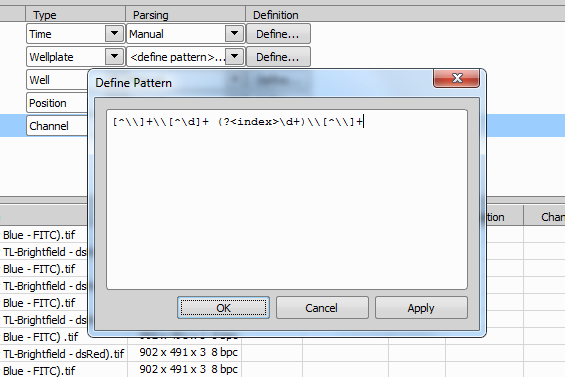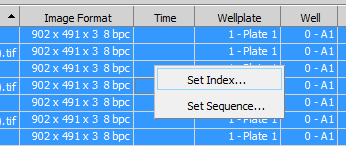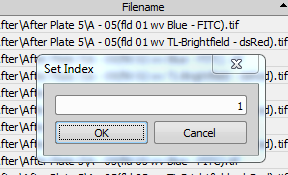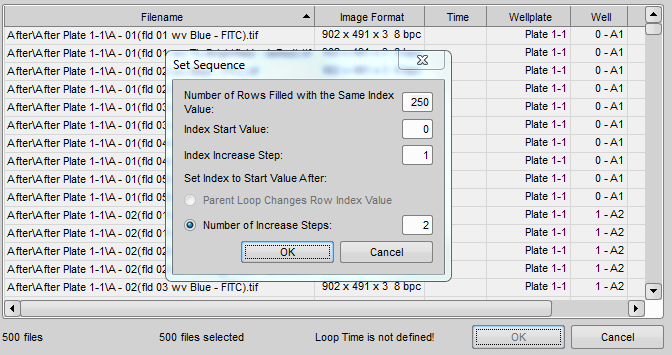Each row in the file/frame table corresponds to a frame. First columns state the name of the file and some basic information about the image. Columns to the right hold loop indexes.
There are two ways to fill each index column: automatically (by parsing the filename) or manually.
Automatic index inferring is done by a Regular Expression (see Perl's regular expression documentation Perl's regular expression tutorial). Each loop may have its own expression which is evaluated on every filename (including the subfolder if not present in the root folder). It must match and produce (capture) either an integer index or special ordering information.
Mapping Regular expression output to indexes:
Index (integer) is the index itself
Column and Row for defining the index for a given well plate definition
name, barcode, x-, y-, z-position are mapped to an index by natural ordering by default
For example, let’s consider time-lapse of two images having three channels:
Time can be parsed directly into the index. The channel is printed as text in the filename, so index cannot be inferred directly. The channel name is used instead.
Following editing options apply only to manual index editing.
Assign index to the selection
As the columns are sorted based on the execution order, the leftmost index is the one that changes less often. Index can be set to a selection of frames.
In this case time-lapse “After” is set to 1 and “Before” is set to 0.
Assign a uniform sequence
If the files can be sorted reasonably, sequence Indexing can be used.
Edit index individually
Manual indexes may be edited manually one-by-one.







